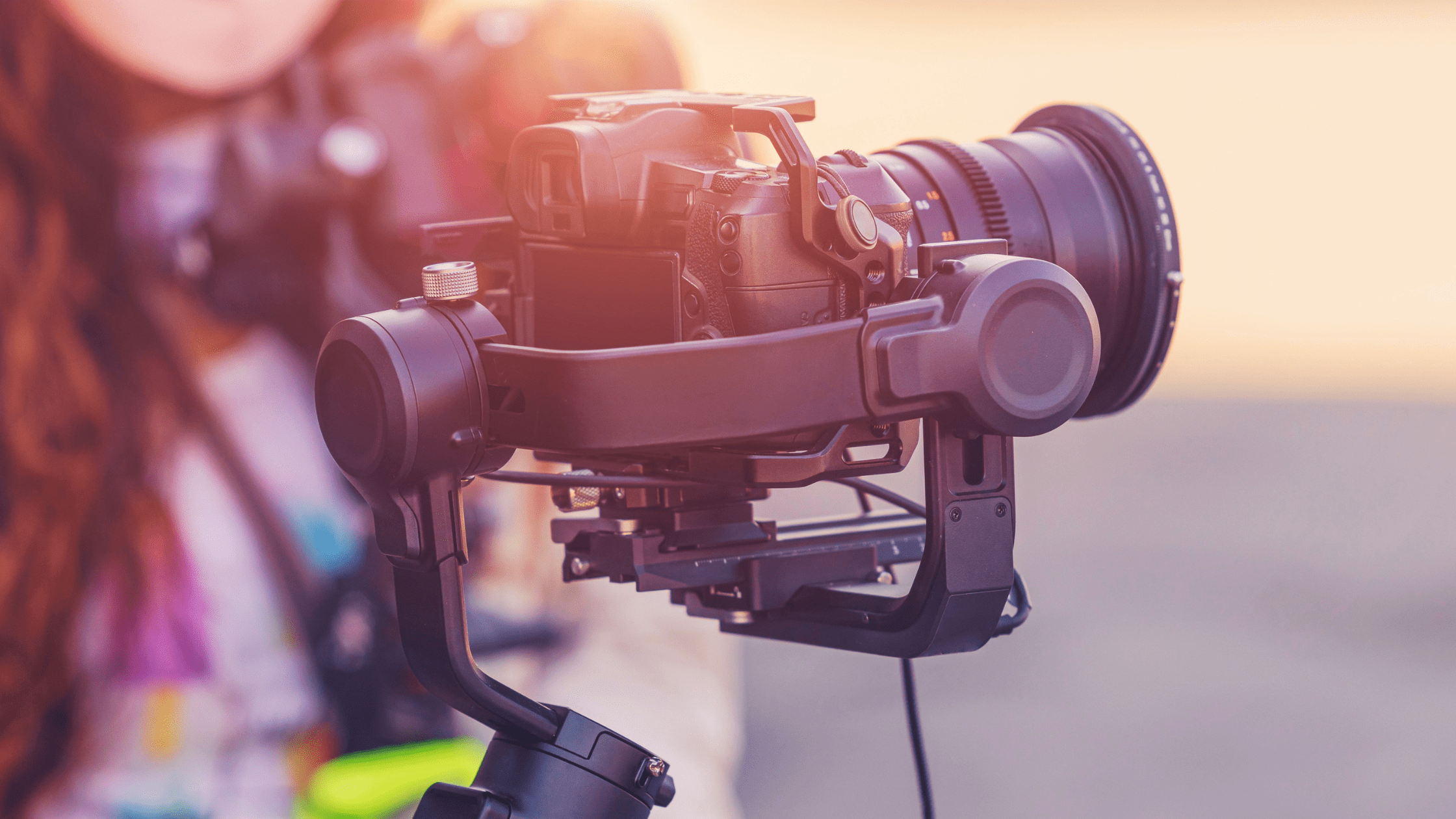
Gimbals are a great tool for achieving smooth and buttery video footage.
When used correctly, gimbals can produce a professional-looking, cinema-style final product.
However, when a gimbal is used incorrectly, that Hollywood look can be interrupted and take an audience out of the moment.
Shakey gimbal footage can be extremely frustrating, but what causes it? In this article, we will answer that question and examine some common causes and easy solutions for fixing a shakey gimbal.
Gimbal shake or vibration is typically caused by either an unbalanced camera or a weight issue that is straining your gimbal’s motors. These issues are typically simple to fix either by rearranging your camera setup or changing the calibration settings on your gimbal.
Take a look at each of the following causes of camera shake to help identify a solution for your shaking gimbal.
Your Gimbal Is Not Balanced Correctly
The Problem
The most common and easiest to solve reason your gimbal may be shaking is a pretty straightforward one: you simply haven’t balanced your camera correctly.
When rushing to prepare for a shoot, it is really easy to rush through the process of balancing your gimbal. If you have done this step incorrectly, your footage could suffer from some annoying gimbal shake.
Solution
If an unbalanced gimbal is the cause of your gimbal shake, the easiest way to fix the problem is to balance your camera and gimbal slowly and methodically.
Once you are confident that your gimbal is balanced, turn on your gimbal and test it out.
If your gimbal is still experiencing shake, then keep reading to check for other possible causes of camera shake.
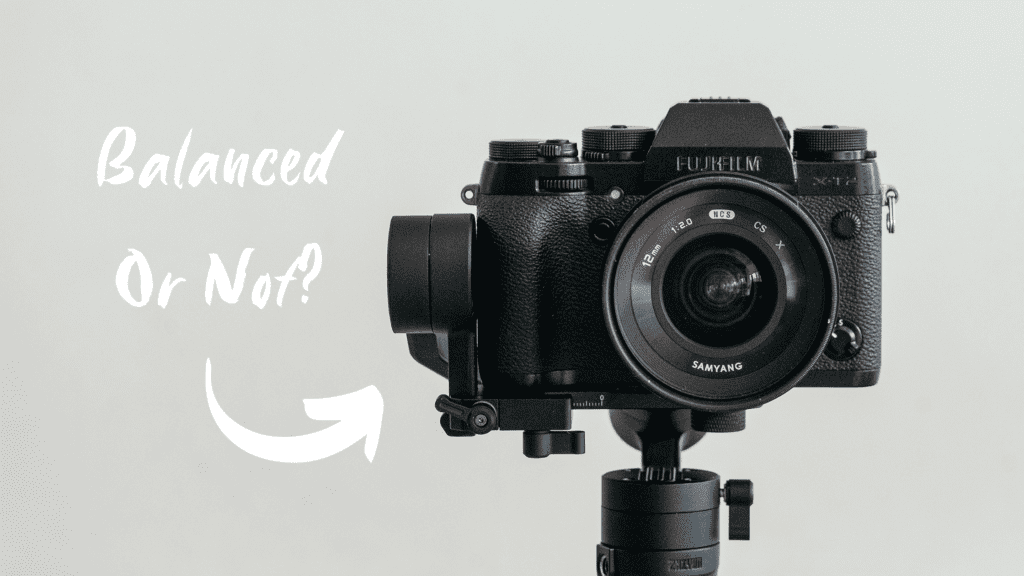
Your Camera Is Too Heavy
The Problem
Another common cause of a shakey gimbal is that your camera setup or “payload” is too heavy for your gimbal. This can cause your gimbal to shake as the motors on your gimbal strain to operate.
The first thing to check, even before purchasing a gimbal, is the maximum weight capacity of the gimbal. Make sure that the gimbal you own or plan to purchase can handle the weight of your camera setup.
I would suggest attaching your largest lens, as well as any accessories (think microphone, external battery etc.) and weighing everything on a scale — this should give you an accurate idea of your camera setup’s true weight.
Note: Even if your camera setup is technically light enough for your gimbal, a heavy setup on a small gimbal could strain the motors over time.
Read More: How Much Weight Can Gimbals Carry? Payloads Explained
Solution
Assuming that you have weighed your camera setup and determined it is within an acceptable weight range for your gimbal, this problem can be solved by changing the settings on your gimbal.
Most consumer gimbals have changeable weight settings. These settings will either need to be changed on the gimbal itself or in the product’s app.
Most gimbal’s weight settings will be set to a default of “Medium.” Try changing this setting to a higher one. This may be labelled “High” or “Ultra.”
This said, make sure you are not overcompensating with a setting that is too high.
In order to tell if your setting is too high for your setup, attach your camera setup to your gimbal and power on the gimbal. Place your finger on the front of your lens and press down lightly. If the gimbal starts shaking, then your weight settings are too high and should be lowered.
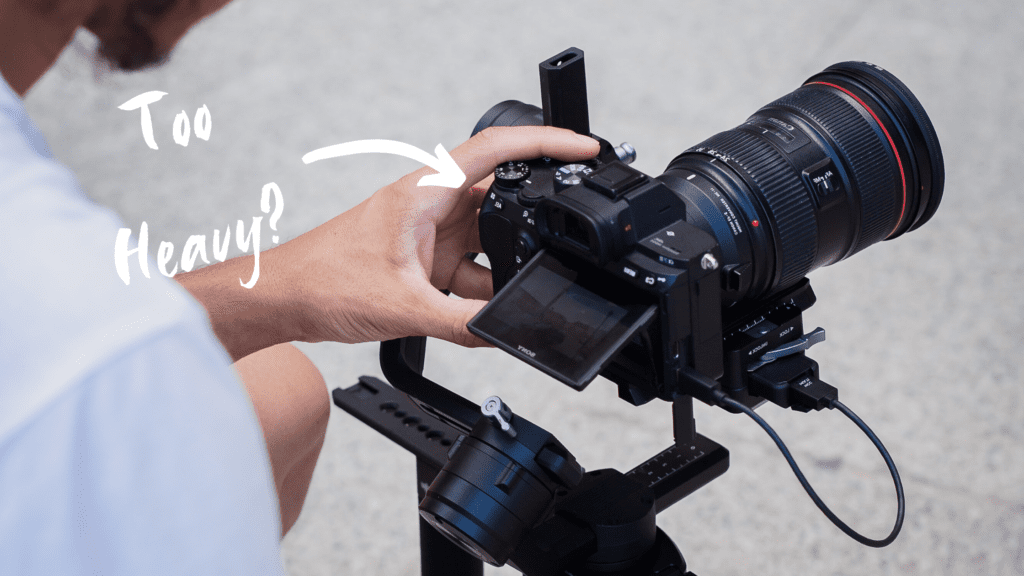
Your Camera Is Too Light
The Problem
While weight is usually a more common issue with heavy camera setups, it is actually possible for a camera setup to be too light. A light camera setup can cause a gimbal to vibrate.
While all gimbals should specify a maximum weight limit, some will also mention a minimum weight limit.
Try attaching your smallest lens to your camera and weigh the pair on a scale — this should give you an accurate idea of your camera setup’s true minimum weight.
Solution
Assuming that you have weighed your camera setup and determined it is within an acceptable weight range for your gimbal, this problem can be solved by altering settings on your gimbal or by adding more weight to your camera setup.
Most consumer gimbals have changeable weight settings. These settings will either need to be changed on the gimbal itself or in the product’s app.
Most gimbal’s weight settings will be set to a default of “Medium.” Try changing this setting to a lower one. This may be labelled as “Low.”
If problems persist, you may need to add more weight to your camera setup.
This can really be achieved by adding a kind of weight. This could include a camera cage, heavier plate, microphone, or a heavier lens. If necessary, you could also get creative with adding weight to your camera — think of all the heavy accessories out there that have cold shoe compatibility, for example!
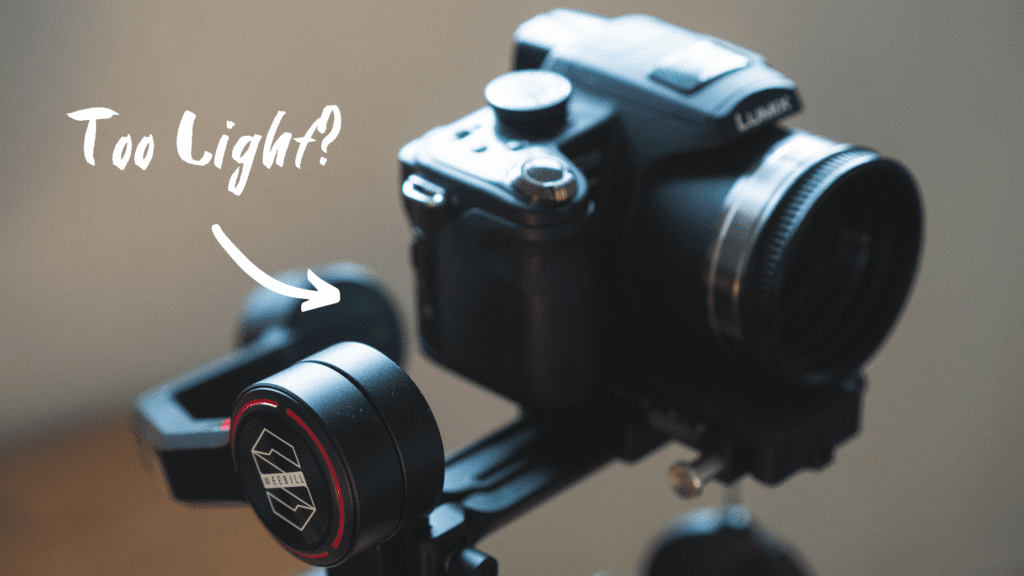
Your Camera Setup Isn’t Balanced Or Symmetrical
The Problem
When attaching accessories to your camera setup, it is easy to get carried away. A microphone here, a monitor there, and before you know you’ve created a bulky unbalanced rig.
Even if your camera setup is within an acceptable weight range for your gimbal, it is still possible for it to cause your gimbal to shake if unbalanced.
To tell if an unbalanced camera setup is a reason behind your shaking gimbal, start by examining your camera setup.
Are there any large, heavy pieces hanging off your setup? Is your setup top-heavy? Or just really tall?
If the answer to any of these questions is yes, then you may have identified the problem.
Solution
To fix an unbalanced setup, start by trying to rearrange things.
Think of your gimbal like a person holding a few bags of groceries. If that person tried to hold all of the groceries in their right arm, they would likely struggle to do so. If they rearranged the groceries and held them in both arms, they would probably have a much easier time!
Just like the person holding groceries, your gimbal needs to be balanced!
So, try evening things out by weight and size.
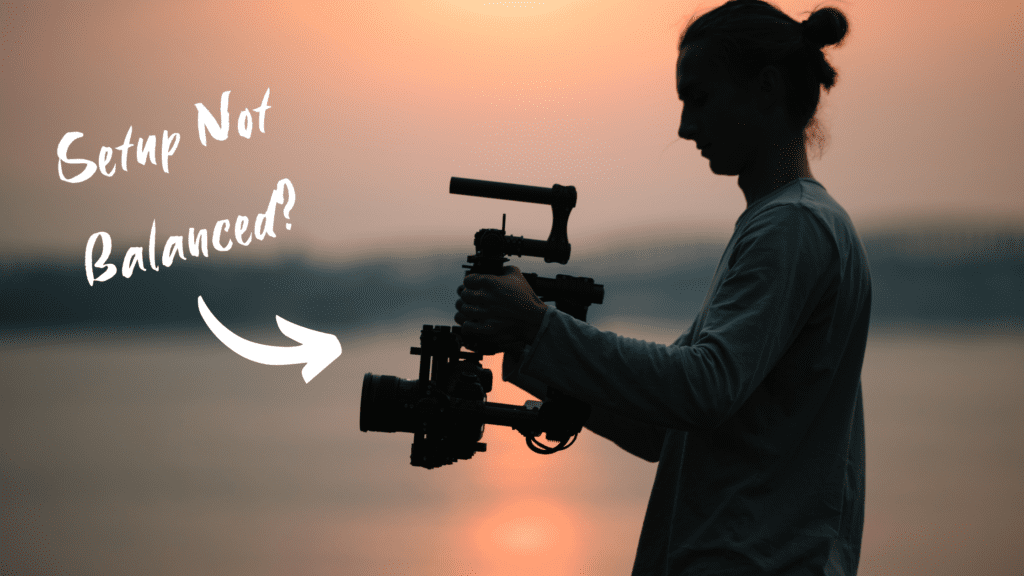
Tips For Fixing A Shaking Gimbal
- Some gimbals have an auto-calibration setting sometimes called “auto-tune.” Try using this feature to help further avoid camera shake.
- Make sure your gimbal batteries are fully charged. Gimbal batteries low on charge could cause your gimbal’s motors to strain more, in turn causing shake.
- It may be necessary to attach accessories to your gimbal instead of your camera. Heavy or bulky accessories like a large microphone or monitor could contribute to an overly heavy or unbalanced camera setup. Try attaching them directly to your gimbal instead.
Final Thoughts
Hopefully, you have found the cause of your shakey gimbal.
But, if you have followed along and troubleshot each potential cause and are still experiencing gimbal shake, your gimbal could be damaged or malfunctioning. If this is the case, you have my sympathy!
In some cases, gimbals can be repaired or returned under warranty.
Happy shooting!






[…] Read More: Why Is My Gimbal Shaking? Causes & Solutions […]
[…] Read More: Why Is My Gimbal Shaking? Causes & Solutions […]